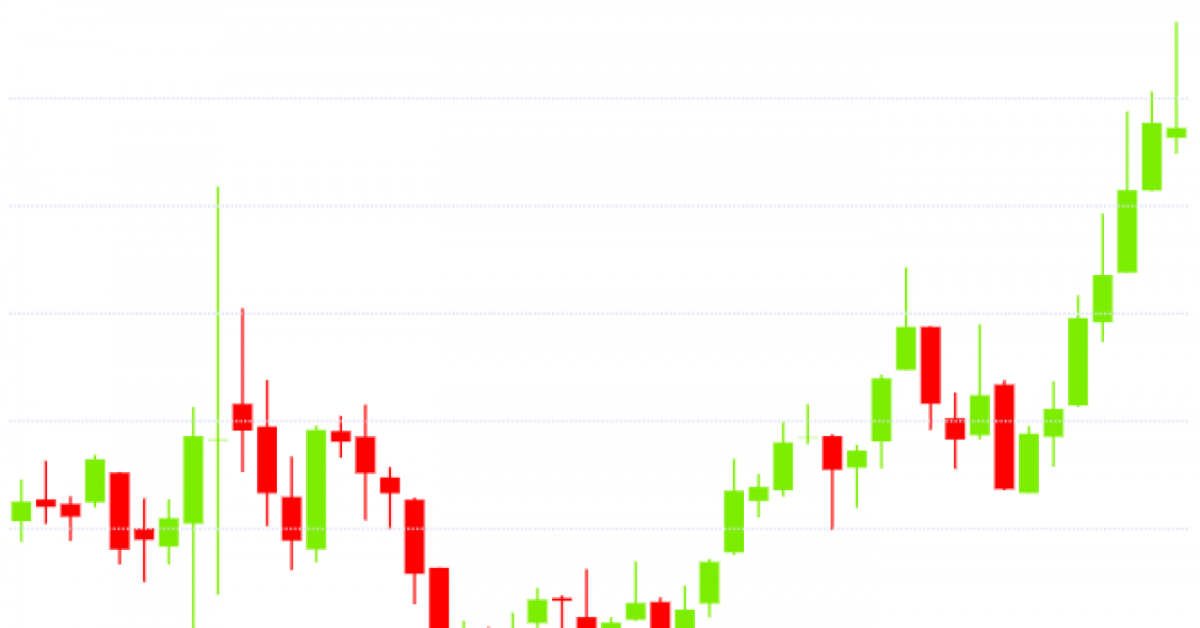Advisors: Here’s What the Dot Com Bubble Can Teach Us About Crypto Investing
Join the most important conversation in crypto and Web3 taking place in Austin, Texas, April 26-28.
:format(jpg)/s3.amazonaws.com/arc-authors/coindesk/cda5a9c7-9d9f-43af-813e-8cf5ad81399d.png)
Eric Ervin is the CEO Onramp Invest.
Join the most important conversation in crypto and Web3 taking place in Austin, Texas, April 26-28.
The saying goes that history repeats itself, and looking back at my years as an advisor in the 1990s, I can see just how true that is.
The current rush of interest in blockchain and cryptocurrency investing feels very similar to the early demand for technology stocks. During the Dot Com Bubble, investors saw the developing value of tech, and stock prices soared based on the promise of vast wealth creation and disruption.
However, as we learned in the subsequent “tech wreck” of the early 2000s, expectations have nothing to do with reality, and many investors lost everything, including what they made in the previous bull market.
You’re reading Crypto for Advisors, a weekly look at digital assets and the future of finance for financial advisors. Subscribe here to receive the mailing every Thursday.
Separating hype from investing reality
Investors need to separate the hype of revolutionary technology from the actual prospects for commercialization. This is incredibly difficult for the average investor, as well as financial advisors who are trained to counsel prudence and caution while surrounded by insanity.
In the ’90s, many advisors’ clients wanted all-in on tech stocks. Clients were losing faith in their advisors because diversification wasn’t working. During the bubble period, the NASDAQ Composite index, which is heavily weighted towards technology stocks, rose from around 1,000 in 1995 to a peak of 5,048.62 on March 10, 2000. This represented an increase of more than 400% in just five years. During that same time, the S&P 500 also performed very well, rising over 200%, but that wasn’t good enough when the Nasdaq was up almost double.
Imagine telling your client for five straight years that the tech stock bubble was just a “fad” that would soon pass. Even the best, most trusted advisors had difficulty convincing clients to avoid the “shiny object” and stay the course with a diversified portfolio of stocks and bonds.
Unfortunately, many clients lost faith entirely and took matters into their own hands, either becoming day traders or investing all of their money in the famous Janus Twenty fund, which at its peak grew to a whopping $88 billion. Notably, this fund invested in just twenty stocks, with their top holdings in companies like AOL, Cisco and Qualcomm. By the end of 2002, this fund’s assets under management had fallen to around $12 billion.
Meeting client demands while minimizing risk
As an advisor, I chose a different approach. Rather than alienating the client by telling them what not to do, I was far more interested in building a collaborative process. If they wanted to sell everything and put it all in Qualcomm, my response was, “Yes, Qualcomm has really performed lately; perhaps we should create a small allocation to Qualcomm and some other telecom stocks. What other stocks are you considering for this more aggressive part of your portfolio?” The clients felt heard, and I was able to protect them from their own worst enemy, which was greed.
Many clients of financial advisors may be feeling the same anticipation around digital assets. Like internet technology, blockchain has real, tangible, long-term use cases. Unfortunately, the pattern for consumer adoption of new innovation is to take it to extremes, and this was very apparent with crypto. Terra Luna, Three Arrows Capital, Blockfi, Celsius, FTX, and many others are all good examples of this. Add leverage to the scenario, and we saw a recipe for disaster.
However, telling the client to “go it alone” is not the answer. As we saw after the inevitable industry shake-up, many investors were heavily invested in specific exchanges or tokens, often without guidance from financial professionals or diversification. With all of their eggs in one basket, they took massive losses. I would argue that many of these clients would have worked with their financial advisor if their advisor had simply offered a more open and welcoming approach toward digital assets.
The lesson I learned through the Dot Com Bubble and that I can now impart to you is that taking a conservative stance toward investing in a new asset class makes sense, but it doesn’t have to be binary. There is a way to exercise caution while still giving your clients exposure. Small doses of the speculative asset class help satisfy the client’s urge to go “all in” while protecting them from the inevitable upheaval that comes with major innovation. This gives you the future chance to look back and say that you gave your investors a chance to embrace opportunity and the excitement of change while still maintaining a balanced, rational investment strategy.
The fact that blockchain technology is stirring up the market is a sign that it’s working. Like the Internet, it’s disruptive by nature, making the highs and lows we’ve weathered over the last year symptoms of positive change. We’re in the early phases of blockchain tech today, but we’re rapidly approaching broader innovation, with cryptocurrencies making way for the tokenization of real-world assets that are spurring revolutionary changes in the distribution of investment opportunities. Before you know it, there will be innumerable ways to invest in digital assets on behalf of your clients. Just as various businesses now leverage tech, blockchain has the potential to permeate across and benefit a wide swath of industries.
All of that is to say: it makes sense that investors want in on digital assets, and with your guidance, you can enable them to engage the market behind tomorrow’s exciting possibilities thoughtfully and, more importantly, securely.
Edited by Henry Bond.
Learn more about Consensus 2023, CoinDesk’s longest-running and most influential event that brings together all sides of crypto, blockchain and Web3. Head to consensus.coindesk.com to register and buy your pass now.
DISCLOSURE
Please note that our
privacy policy,
terms of use,
cookies,
and
do not sell my personal information
has been updated
.
The leader in news and information on cryptocurrency, digital assets and the future of money, CoinDesk is a media outlet that strives for the highest journalistic standards and abides by a
strict set of editorial policies.
CoinDesk is an independent operating subsidiary of
Digital Currency Group,
which invests in
cryptocurrencies
and blockchain
startups.
As part of their compensation, certain CoinDesk employees, including editorial employees, may receive exposure to DCG equity in the form of
stock appreciation rights,
which vest over a multi-year period. CoinDesk journalists are not allowed to purchase stock outright in DCG
.
:format(jpg)/s3.amazonaws.com/arc-authors/coindesk/cda5a9c7-9d9f-43af-813e-8cf5ad81399d.png)
Eric Ervin is the CEO Onramp Invest.









